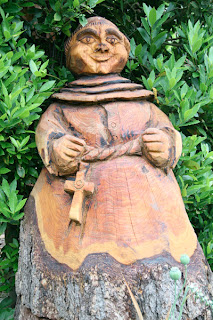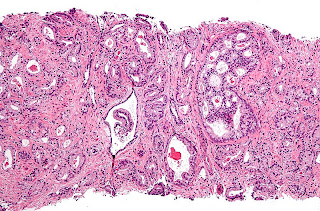Continuing our series on eminent or interesting former residents of Budleigh we recall someone who really should have been featured in our Olympics-themed items of 2012.
Marley Harris died on 19 August, just under two years ago, aged 83. As Marley Spearman, she was one of the most celebrated amateur lady golfers of the 1960s. The stories about her are legendary, not least including the explanation of how she became a golfing star having begun her career as a dancer on the West End stage. She was born Marley Joan Baker on 11 January 1928, the daughter of a businessman, and grew up in Wimbledon. Leaving school early, she joined a dance troupe which performed at London’s Windmill Theatre. After marrying Tony Spearman in her twenties she left the stage, living as a housewife in a flat in Knightsbridge.
Among those inspired by her later sporting success was her nephew Mitchell Spearman, the Florida-based golf professional. Both he and East Devon Golf Club member Bob Lankester were struck by the story of how living in Knightsbridge played a part in Marley Harris’ career.
Bob Lankester met her about ten years ago at a cocktail party shortly after Peter Alliss had sent her his best wishes for a speedy recovery whilst commentating on that year’s Open Golf Championship. He was curious to know how she was acquainted with this well known golf broadcaster.
“She had recently got married and lived in the Knightsbridge area of London in the 1950s,” he explains. “Her husband informed her he wished to have a dinner party on the Friday. She went to Harrods to do the shopping and on emerging found it was raining heavily with the taxi rank crowded, so she went back into Harrods noticing that golf lessons were being offered and decided to give it a try.”
“I took off my hat, gloves and heels,” she told her nephew. “The instructor showed me how to grip, stand and swing. Being a dancer it was easy for me to emulate a move. In no time at all I was hitting the ball into the net.”
“Her husband played at the Royal Mid-Surrey Golf Club in Richmond,” continued Bob Lankester. “He mentioned at the dinner party that they were one short for their fourball match the next day upon which Marley reported that she could now play golf and would fill the vacancy. He told her not to be so bloody silly but if her interest had been aroused she should take lessons from the professional at Regent’s Park.”
![]() Mitchell Spearman took up the story, explaining how his aunt had impressed the pro at the Regent’s Park golf centre where her husband had arranged lessons. ‘“The pro came and spoke to me,’ she said. ‘He said I had a lovely swing and couldn’t believe I was a beginner. He said if I practised hard I could be an international player. I had no interest in that, I was just enjoying being out of the flat. After about a month I asked Tony if I could go on the course with him. On the drive out there the next day, Tony told me some of the rules but stressed if I miss the ball pick it up and also not to embarrass him.
Mitchell Spearman took up the story, explaining how his aunt had impressed the pro at the Regent’s Park golf centre where her husband had arranged lessons. ‘“The pro came and spoke to me,’ she said. ‘He said I had a lovely swing and couldn’t believe I was a beginner. He said if I practised hard I could be an international player. I had no interest in that, I was just enjoying being out of the flat. After about a month I asked Tony if I could go on the course with him. On the drive out there the next day, Tony told me some of the rules but stressed if I miss the ball pick it up and also not to embarrass him.On the 1st hole we all played from the same tee. I hit an absolute beauty, Tony was stunned. He said I had a long swing but had great timing. When we got to the fairway my ball was the longest of the group. I shot in the low 80s that day. Tony said ‘Anyone can shoot a good score, but you have to do it in a competition to know if you are good.’”
Bob Lankester went on to tell the story of how some three to four months later at another dinner party Tony Spearman again mentioned that they were one short for golf on Saturday and in the absence of anyone else agreed for Marley to join the other three men, knowing that she had been regularly receiving coaching from the pro at Regents Park. “He stipulated that Marley should fill the place of their regular golf partner, meaning that she would play off the men’s tees and receive no handicap allowance.”
“I find the next bit extraordinary,” says Bob Lankester. “If my memory serves me well she said she went around in 86 stokes never having been on a golf course before — which is remarkable. Her husband immediately obtained membership for her at his club at Sudbury, in Wembley, Middlesex.”
Marley Harris’ first ladies’ competition was an upsetting experience resulting in her disqualification as she told her nephew. “Tony entered me in a Ladies Stableford at his club, Sudbury. I didn’t understand the scoring system but had 55 points off a 36 handicap and won. I accepted the prize but then heard the other ladies saying I cheated as I was playing off an incorrect handicap. I burst into tears but at that moment I knew I wanted to be as good a golfer as I could be. I went to the car and sobbed. From that day on I practised and played golf every day. I was enjoying every moment. I also knew I didn’t need to practise that much to perfect my swing but I knew it would give me a mental edge that would help me in competition.”
Despite her unhappiness with this experience her husband told her to forget the incident and prove to the Ladies’ Committee how good she was, said Bob Lankester. “Within twelve to eighteen months she was playing for England, went on to become the British Ladies’ Champion on three occasions and played many times in the Curtis Cup against the Americans. In other words she was the foremost lady golfer of her day and often played with Peter Alliss in mixed competitions at the highest level, which was why he had, on television, sent her his best wishes.”
A MiddlesexCountyplayer, Marley won the Ladies’ British Open Amateur Championship in 1961 and 1962, as well as the English Championship in 1964. She played in the Vagliano Trophy matches in 1959 and 1961, the Commonwealth (now Astor Trophy) Tournament in 1959 and 1963 and the Curtis Cup in 1960, 1962 and 1964.
Her obituary published by the Ladies Golf Union recalled Marley Harris as a breath of fresh air in the staid and respectable tweed-suited 1950s. She herself said that she was at first regarded with some suspicion in the golf world — possibly, she thought, because her style of dress did not accord with that expected of lady golfers of the time.
![]() Mitchell Spearman continued to pursue golf as a full-time career, inspired by his aunt’s talent. He has been a premiere instructor in the world of golf for over 20 years and is one of Golf Magazine’s ‘Top 100 Teachers in America.’ He recalls memories of her devotion to the sport with great fondness and pride. “She once told me she would hit pitching shots to an upside down colored umbrella, and she would aim at each individual color so that she could focus on being that accurate.”
Mitchell Spearman continued to pursue golf as a full-time career, inspired by his aunt’s talent. He has been a premiere instructor in the world of golf for over 20 years and is one of Golf Magazine’s ‘Top 100 Teachers in America.’ He recalls memories of her devotion to the sport with great fondness and pride. “She once told me she would hit pitching shots to an upside down colored umbrella, and she would aim at each individual color so that she could focus on being that accurate.”
“Another story that Marley told me was that not too many years ago she was at a cocktail party and someone asked her if she played golf. She responded by saying ‘Yes but not too much anymore.’ The other party said, ‘I understand you kind of giving it up, it’s a hard game!’ As you can imagine Marley never said a word.”
“One of my fondest memories was that I was in Australia at Royal Melbourne working with Nick Faldo and Greg Norman at the Aussie Open in the early nineties. On the weekend I was invited into the clubhouse for lunch. As I walked past the trophy cabinet I stopped to look at the magnificent array of wonderful trophies and display. I then saw a picture of Aunt Marley with a notation that she won the Australian Ladies’ Amateur in 1964, I think. Anyway that made me feel so proud.” Marley Harris and Tony Spearman divorced and she married Steven Harris. The couple moved from Surreyto Budleigh Salterton in 1982. Her husband, with whom she had a son, died in 1991.
On Monday 18 March 2013 at 7.30 pm, a talk jointly organised by FairlynchMuseum and the Otter Valley Association, will take place in Budleigh Salterton’s Peter Hall. The speaker will be former national weather forecaster Nick Ricketts on the theme of ‘World Events and the Weather.’ Based with the Met Office at its original Londonsite, Nick Ricketts moved to Devon on retiring and now gives talks on climate change effects. He has always had an interest in the past and his talk will give a fascinating slant to our understanding of certain historical events, mainly of a military nature.But the weather can affect the tiniest detail of our lives in all kinds of ways. Did you know, for example, that modern climatologists have come up with a new explanation for the superior sound of violins crafted by the Italian master Antonio Stradivari? It may have been the weather.
Two researchers, Henri Grissino-Mayer, a University of Tennesseetree ring scientist and Lloyd Burckle, a ColumbiaUniversityclimatologist, have published their conclusions in the journal Dendrochronologia. They believe it was the sharp dip in temperatures of the Little Ice Age that created the wood which made the violin that so many revere.Marley Harris too, a golfing star whose talents some might compare to the master of violin-making himself, found that the weather played a crucially life-changing part in her destiny. Bob Lankester recalls that when he met her she was by then suffering from leukaemia to which she eventually succumbed. “Her final words to me were: ‘Do you know, if it had not been raining that day when I went to Harrods I may never have known that I had a special talent.’”Photos of Marley Harris courtesy of the Royal Melbourne Golf Club, Australiahttp://www.royalmelbourne.com.au/
![]()




















































